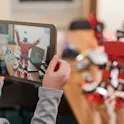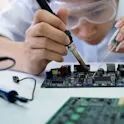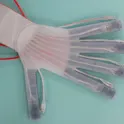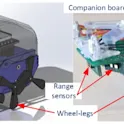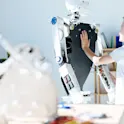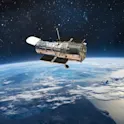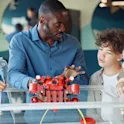
Featured news
08 Aug 2025
'One child called the robot "my little brother"': can assistance tech become part of the family?
In a new article published in Frontiers in Robotics and AI, Dr Zhao Zhao and her colleagues investigate the long-term lifespan of a social robot given to 20 families in 2021 to see whether it could help their children learn to read. Four years after their previous study, the robot was no longer needed for its primary purpose, but that didn’t mean it was no longer wanted. In this guest editorial, Zhao explores the new roles the robot that stayed took on — as keepsake, pet, and companion — and how our relationships to technology can change over time.

